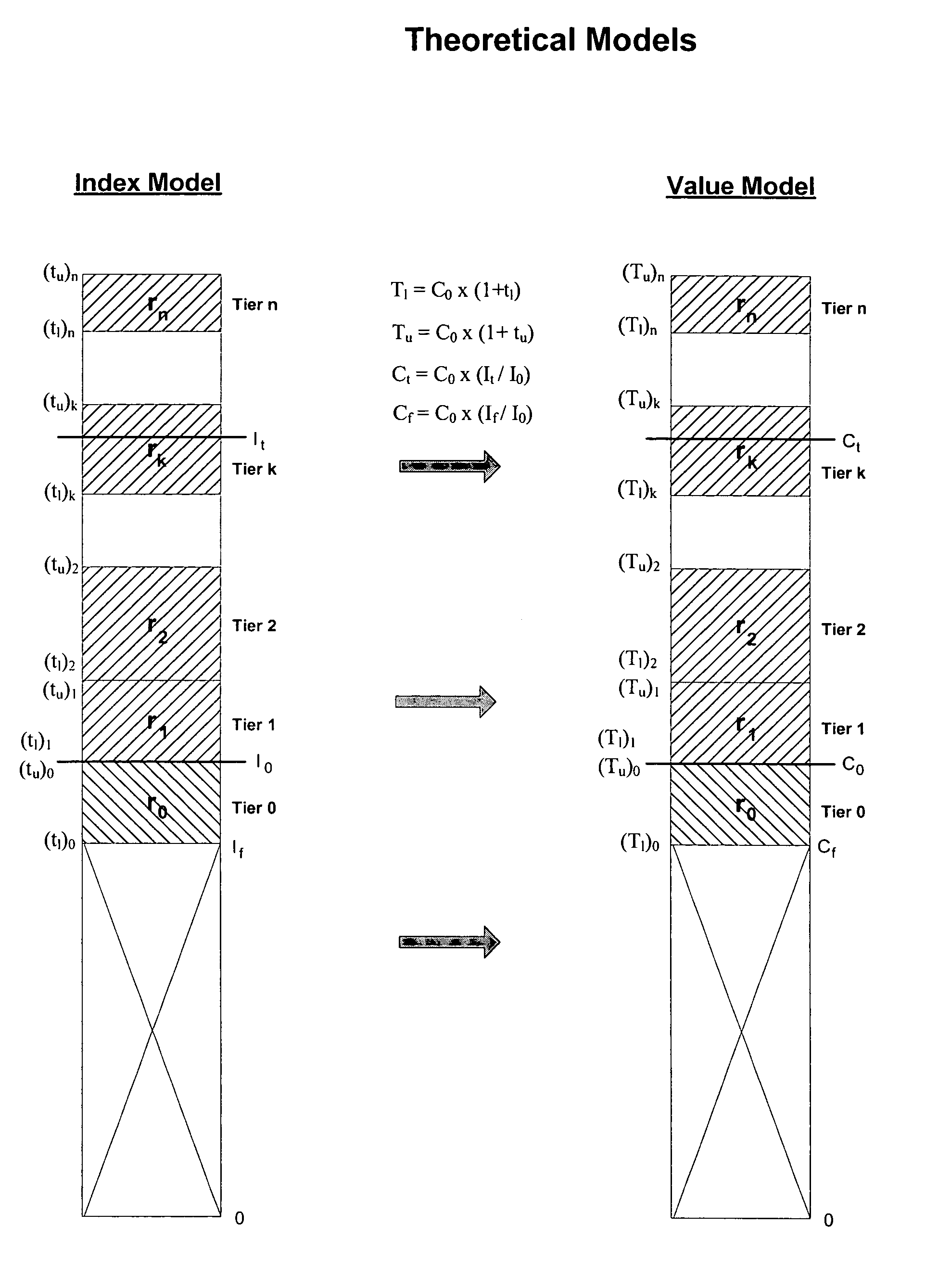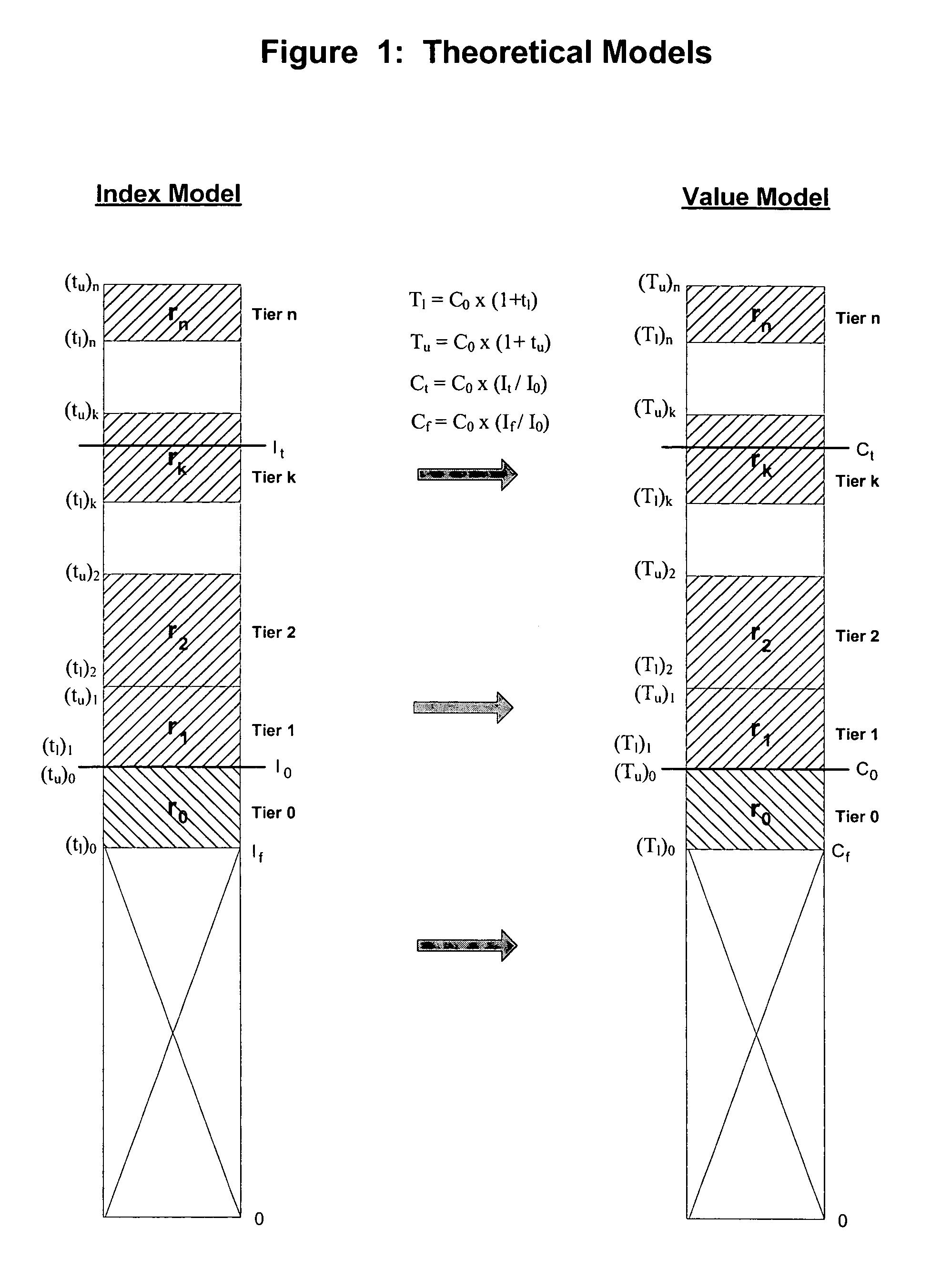Participatory equity appreciation contract ("PEAC")
a technology of equity appreciation and participation, applied in finance, buying/selling/lease transactions, data processing applications, etc., can solve the problems of inability to make the down payment required to qualify for a mortgage loan on the property, inability to plan the purchase in advance without incurring the risk of market appreciation, and inability to meet the requirements of the down paymen
- Summary
- Abstract
- Description
- Claims
- Application Information
AI Technical Summary
Benefits of technology
Problems solved by technology
Method used
Image
Examples
example 1
[0079]Jerry currently rents his primary residence. However, he anticipates the need to purchase his first home within four years. Jerry projects that a property which is currently worth $200,000 would satisfy his needs. He is concerned about continued price appreciation in the real estate market, and wishes to reduce the risk of being priced out of the market by the time the home is to be purchased. On Feb. 14, 2005, Jerry purchases a PEAC with a term of four years and a Contract Basis (C0) of $200,000, for a fee of $10,000. On Nov. 29, 2008, Jerry purchases a home for $260,000. At such time, the real estate index has appreciated 35% since the PEAC was purchased, i.e., the Final Index Level (It) is 35% above the Initial Index Level (I0). The computer system calculates the participatory payment in terms of the Value Model as illustrated in FIG. 3, as follows:
V=0.10×($200,000−$190,000)+0.20×($220,000−$200,000)+0.50×($270,000−$220,000)[0080]V=$30,000
[0081]Jerry is entitled to a partici...
example 2
[0082]Elaine currently owns a home worth $200,000. However, she anticipates the need to purchase a bigger home within four years. Elaine projects that a property that is currently worth $300,000 would satisfy her expanding family's needs. She is concerned about continued price appreciation in the real estate market, and would like to reduce the risk of being priced out of the market by the time the bigger home is to be purchased. On Feb. 14, 2007, Elaine purchases a PEAC with a term of four years and a Contract Basis (C0) of $300,000, for a fee of $15,000. On Jul. 16, 2010, Elaine purchases a home for $280,000. At such time, the real estate index has depreciated 2% since the PEAC was purchased, i.e., the Final Index Level (It) is 2% below the Initial Index Level (I0). The computer system calculates the participatory payment in terms of the Value Model as illustrated in FIG. 4, as follows:
V=0.10×($294,000−$285,000)=$900
[0083]Elaine is entitled to a participatory payment of $900. Alth...
example 3
[0084]George is an investor with a portfolio of stocks and bonds but no exposure to the real estate market. He has identified several rental units that he thinks might represent an interesting real estate investment opportunity. However, he is concerned about the property-specific risk that he would incur and the immediate burden that the operation of these units may put on his personal schedule. George anticipates that within four years he will have the time to operate the rental units. Meanwhile, he is willing to make an immediate investment in the broad real estate market of the area where he plans to invest in real estate. On Feb. 14, 2008, George purchases a PEAC with a term of four years and a Contract Basis (C0) of $400,000, for a fee of $20,000. On Oct. 26, 2011, George purchases three rental units for a combined total of $340,000. At such time, the real estate index has depreciated 10% since the PEAC was purchased, i.e., the Final Index Level (It) is 10% below the Initial I...
PUM
 Login to View More
Login to View More Abstract
Description
Claims
Application Information
 Login to View More
Login to View More - R&D
- Intellectual Property
- Life Sciences
- Materials
- Tech Scout
- Unparalleled Data Quality
- Higher Quality Content
- 60% Fewer Hallucinations
Browse by: Latest US Patents, China's latest patents, Technical Efficacy Thesaurus, Application Domain, Technology Topic, Popular Technical Reports.
© 2025 PatSnap. All rights reserved.Legal|Privacy policy|Modern Slavery Act Transparency Statement|Sitemap|About US| Contact US: help@patsnap.com



